ME405 Thermal Systems Design Project 1: Steam Turbine Analysis
VerifiedAdded on 2020/03/16
|7
|603
|61
Project
AI Summary
This document presents a comprehensive solution for Project 1 in ME405: Thermal Systems Design at Washington State University, focusing on a steam turbine power plant with steam reheat and regenerative co-generation. The project addresses the design of a system that meets specific constraints, including a thermal efficiency target above 45% and combustion efficiency of 88%. The solution includes system diagrams, T-s diagrams, and detailed calculations of turbine work, plant efficiency, and mass flow rates. It also covers the design of a co-generation plant, fluid properties, and the application of the first and second laws of thermodynamics. Furthermore, the document analyzes various parameters affecting efficiency and references relevant research papers. This project demonstrates a thorough understanding of thermal system design principles and practical application in power plant engineering.
1 out of 7
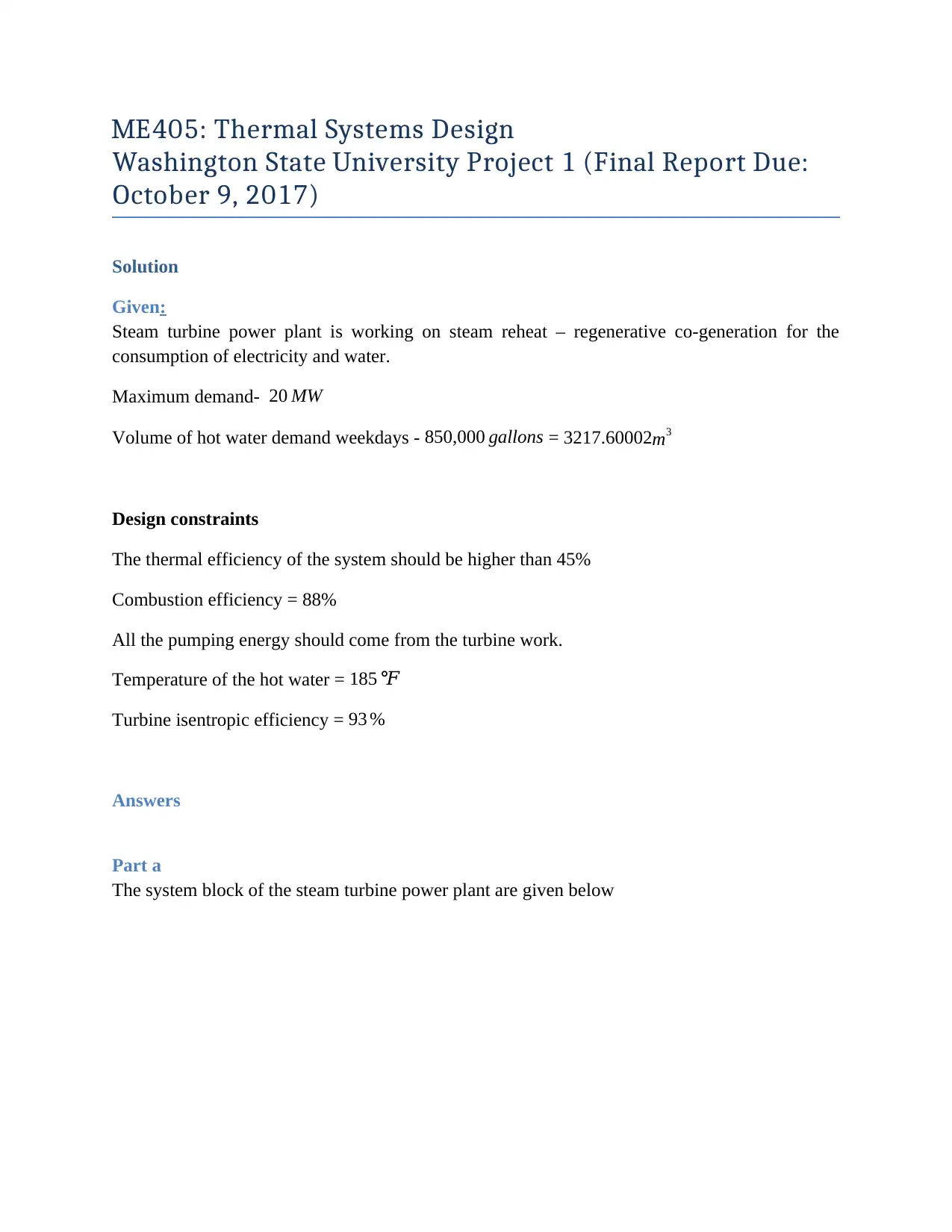
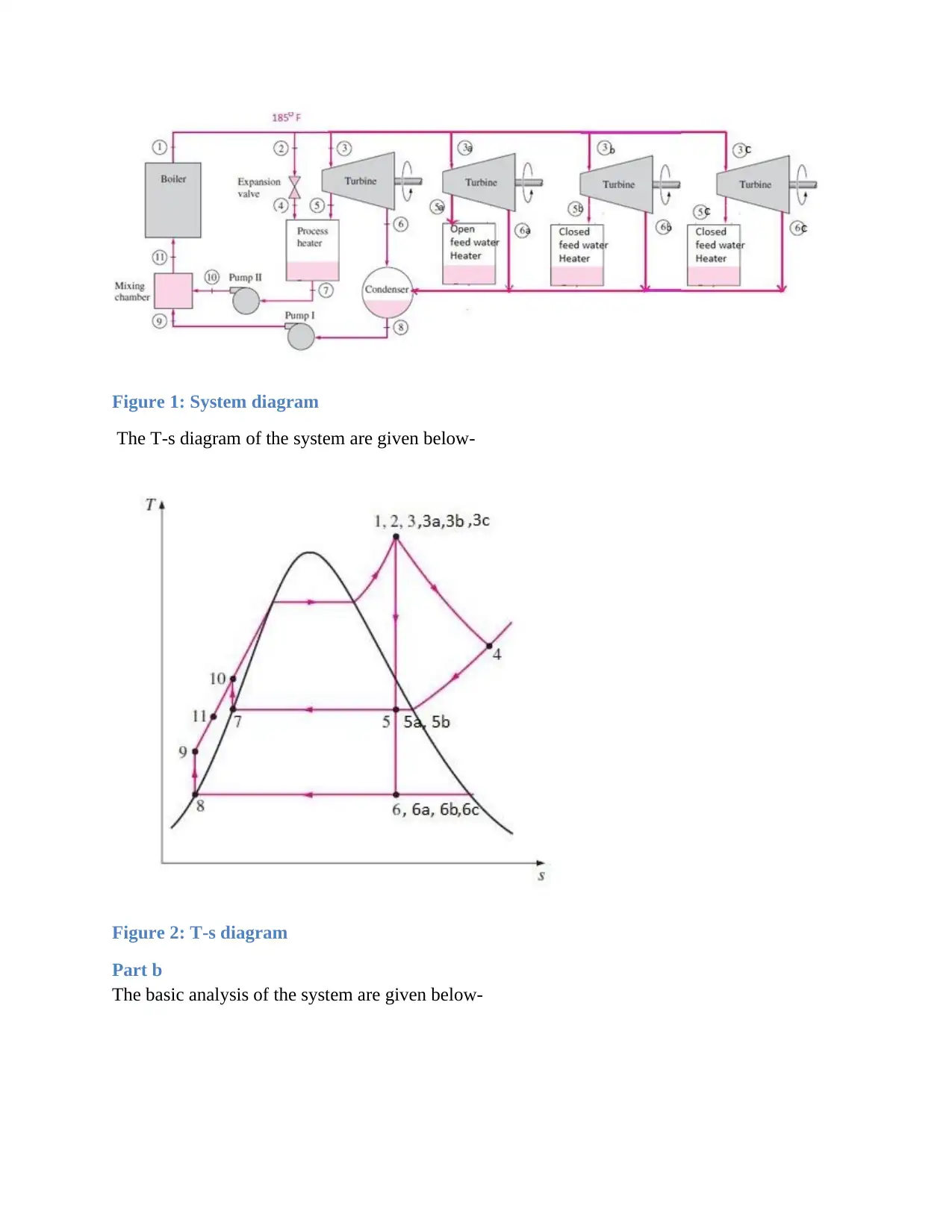
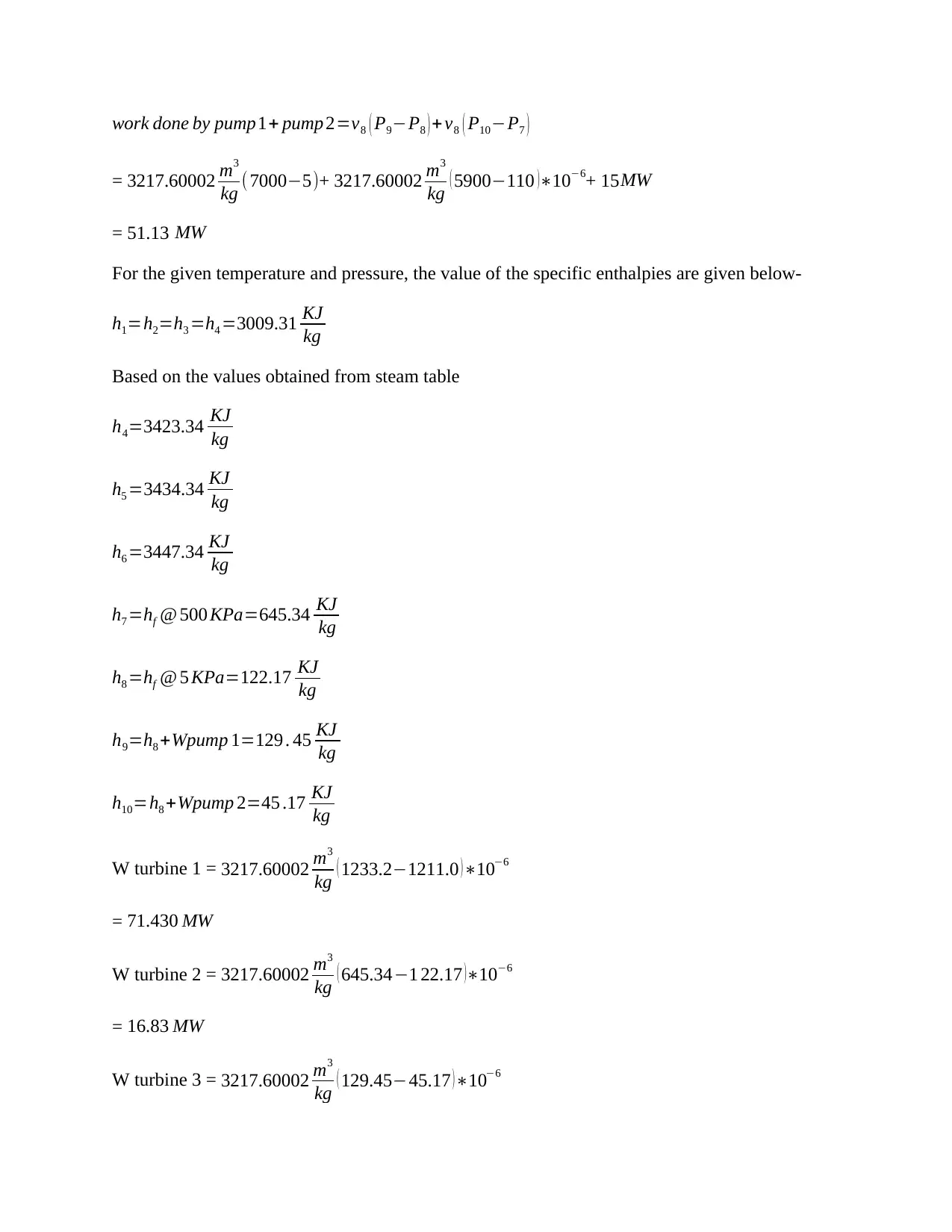

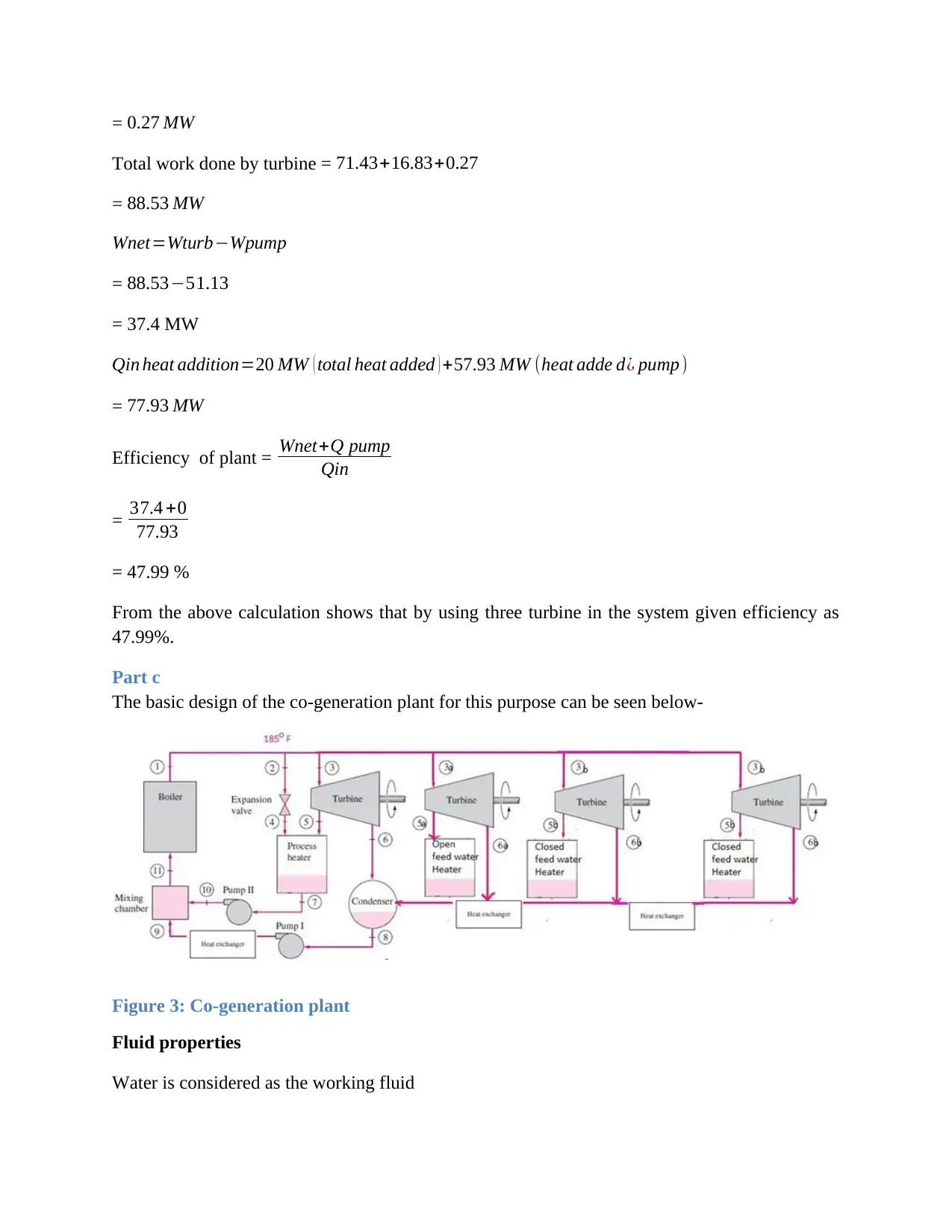
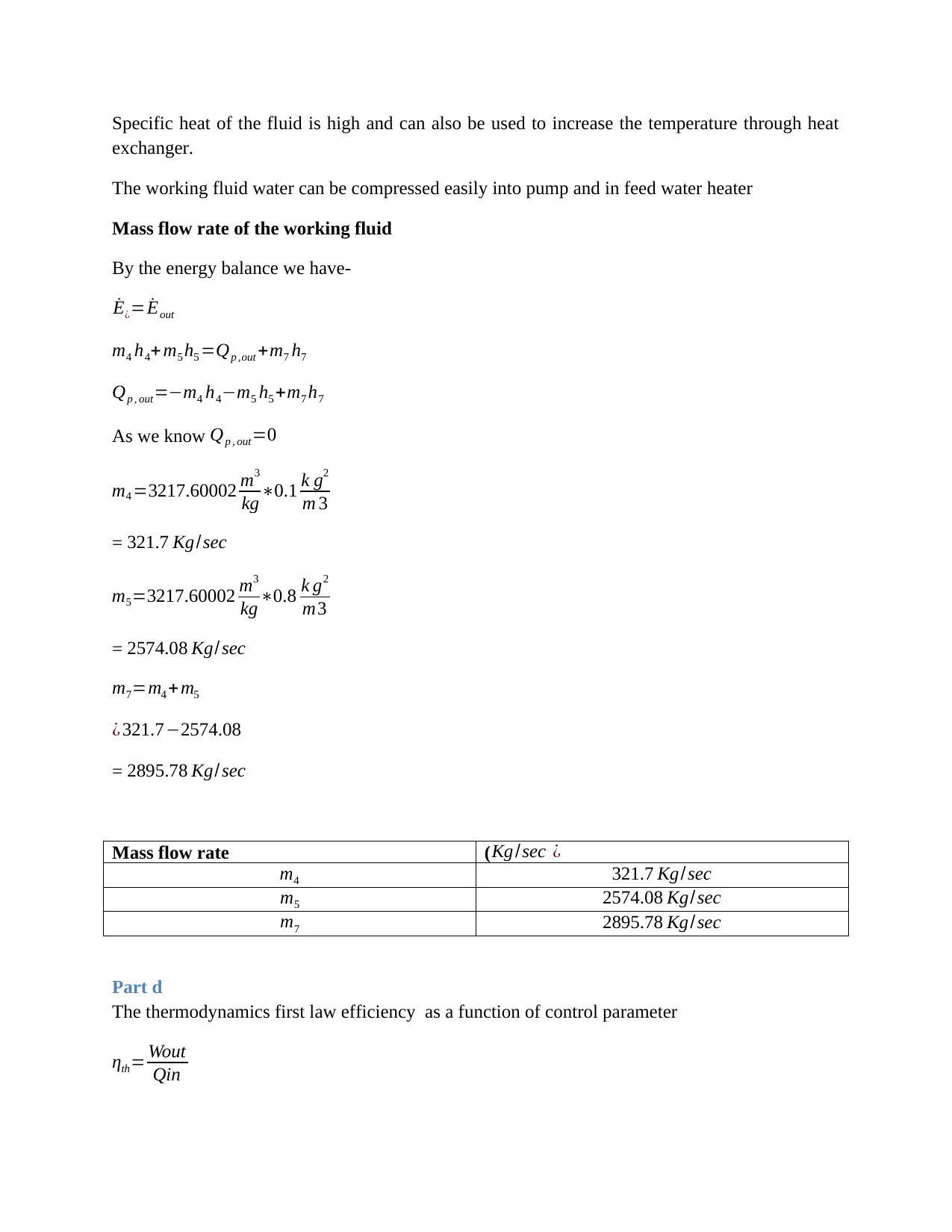
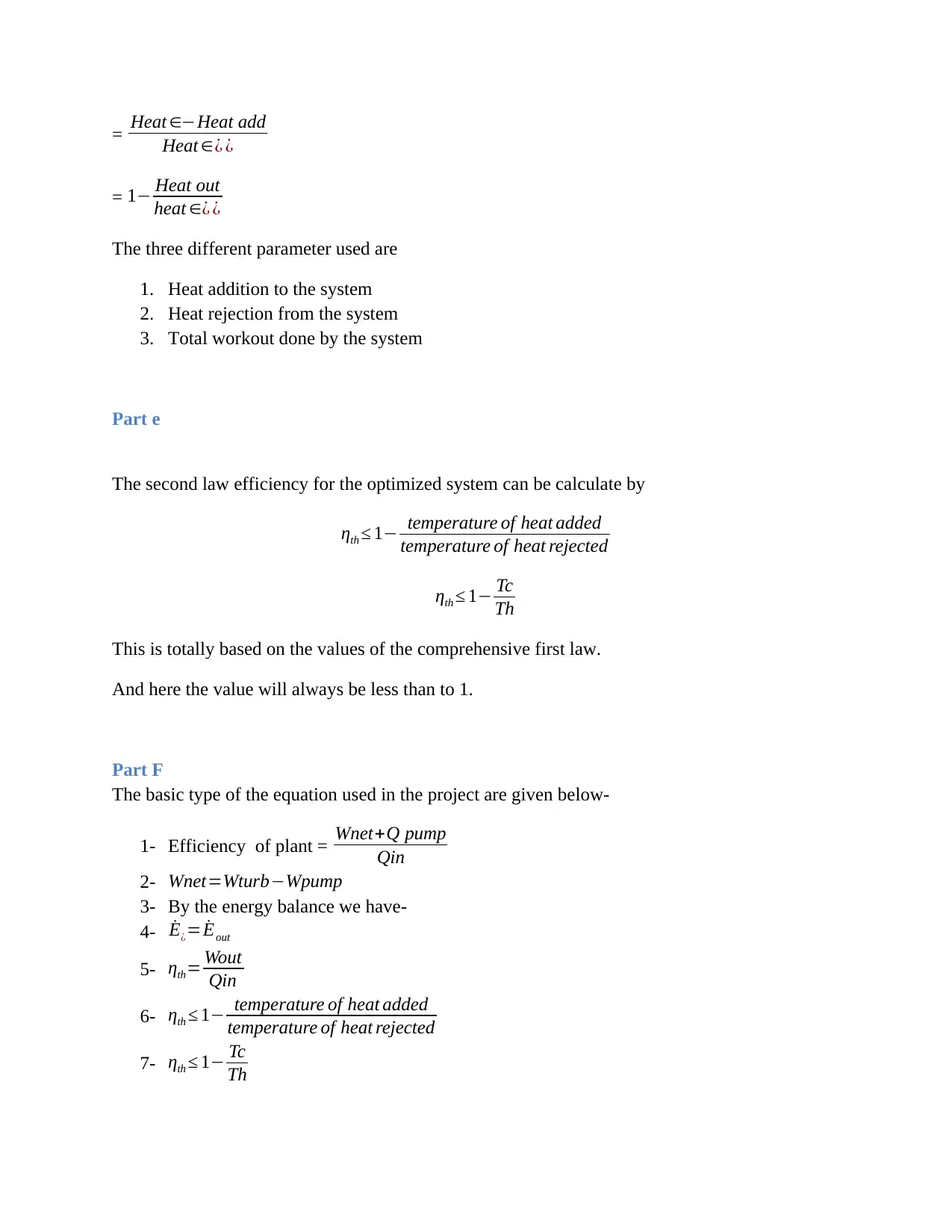
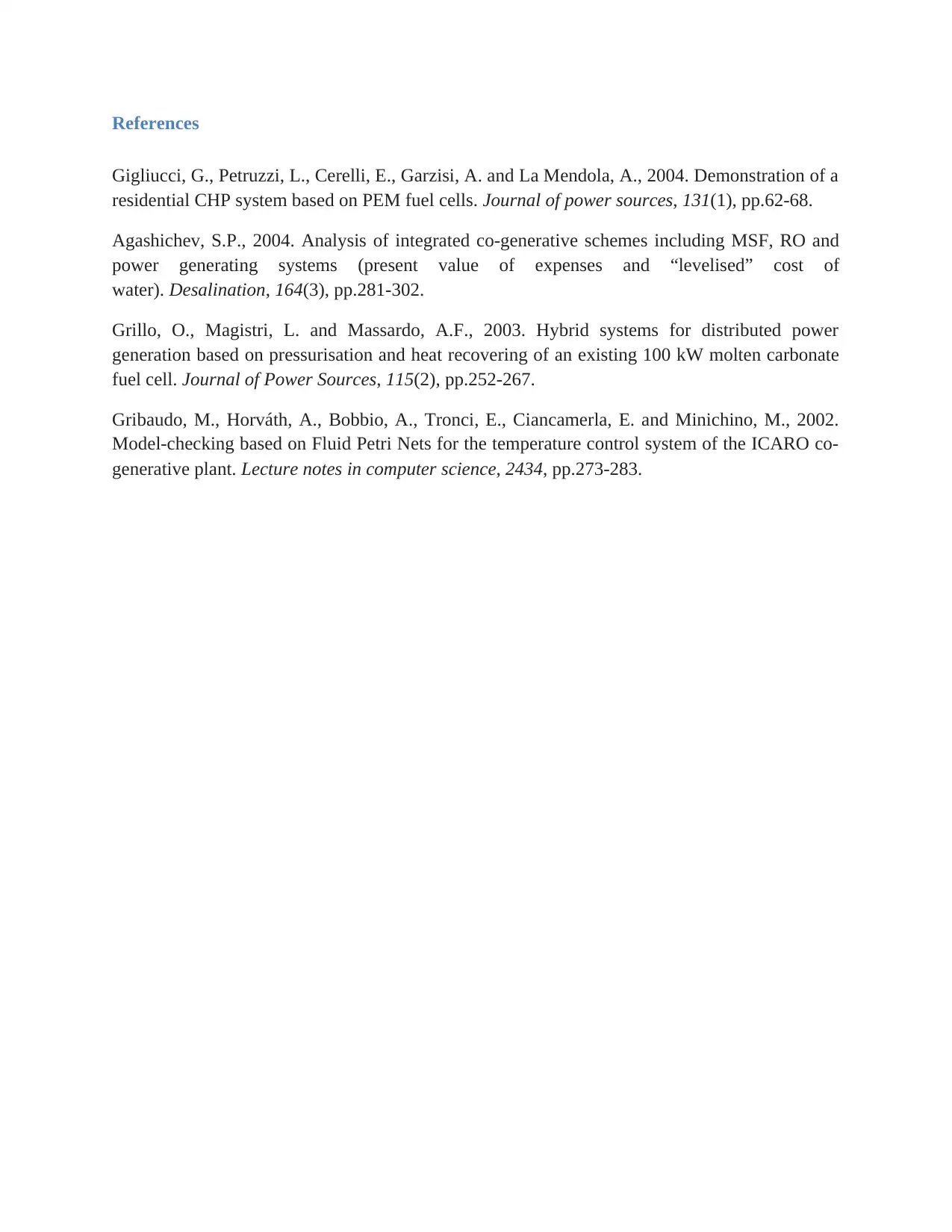






![[object Object]](/_next/static/media/star-bottom.7253800d.svg)